The difference between a thermistor and a thermostat is that a thermostat is a thermostat, but a thermistor is a resistor whose resistance fluctuates fast and reliably with temperature and can thus be used to detect temperature. It is critical to have a good grasp of the thermistor and thermostat. In today’s post, we will have a detailed look at both thermocouples and thermistors and find their difference. So, Follow us here in Linquip.
At Linquip’s website, you can find all the information you require about thermostats and thermistors, depending on your requirements. If you have any questions concerning any of these temperature measurement devices, Linquip has a team of experts available to answer any questions you may have. Our suggestion is that you take a moment to read Linquip’s article titled “What Are Temperature Sensors?“.
Furthermore, you are welcome to register as a Linquip Expert to receive access to all the services Linquip has to offer. Would you be willing to contribute a Guest Post to Linquip? In the Linquip platform, you have the option of publishing content as a guest contributor and submitting it directly to our platform.
What is a Thermistor?
A thermistor is a resistor that responds to temperature. The name is a mix of the words “thermal” and “resistor.” It is formed of metallic oxides that have been pressed into a bead, disk, or cylindrical shape before being encased in an impermeable substance such as epoxy or glass. The thermistor is a thermally sensitive resistor whose primary role is to show a significant, predictable, and accurate change in electrical resistance in response to a change in body temperature.
Because it is composed of semiconductor material, the thermistor possesses both positive and negative temperature coefficients. The temperature coefficient in a thermistor depicts the relationship between changes in resistance value and temperature. In the case of a positive temperature coefficient, resistance increases as temperature rises, however, in the case of a negative temperature coefficient, resistance reduces as temperature rises. Also, because it can detect tiny temperature changes, the negative temperature coefficient can be high enough to account for many percentage increases in temperature. Moreover, the thermistor requires an external voltage to function as a measuring device. The device has a small range, but high accuracy.
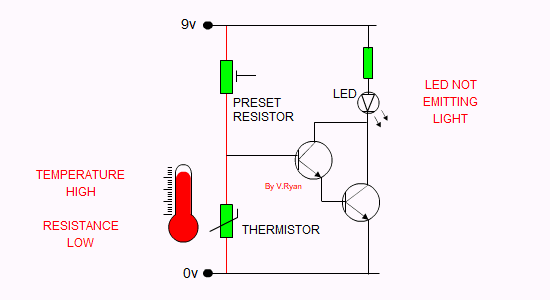
Thermistor outperforms all other types of sensors in nearly every way. This includes the cabling of these devices. Because cables add resistance to the circuit, using extremely lengthy wires might cause the reading to change. The thermistor may be wired with thousands of feet of cable while keeping error levels under acceptable limits. Another area in which the thermistor excels is “response time”. It can detect unexpected temperature changes considerably faster, allowing linked devices to make crucial choices more quickly.
The thermistor is used to measure low temperatures. It has a high sensitivity, which means it can detect even minor temperature changes. This device is available in a broad range of sensitivities, working temperature ranges, and form factors, including disc, chip, and hermetically sealed glass-encased devices. Temperature measuring and control devices, circuit protection devices, and surface-mount temperature compensation devices are some of the applications of the thermistor. The thermistor can also be utilized as a temperature-detecting probe in specific cases. The thermistor is also often used in everyday appliances such as refrigerators, air conditioning units, and even water heaters if the temperature is not too high.
So briefly speaking:
- A thermistor is made from semiconductor materials.
- It is made of manganese, nickel, or cobalt oxides, a semiconductor material, and it has high precision.
- It has a high level of precision. As a result of the negative temperature coefficient, we can detect a little temperature change.
- It has a temperature range of 200 degrees Celsius to 125 degrees Celsius.
- Its reaction time ranges from 0.2 to 10 seconds.
- It is used to determine the temperature of household equipment, with a measurement range of -60 to 15 degrees Celsius.
- It is used in industries to determine the temperature of equipment.
- Its most typical applications are temperature measurement and regulation.
Two important questions about the thermistor:
How accurate is a thermistor?
A thermistor is among the most precise temperature sensor. It has a very restricted temperature range, operating only from 0°C to 100°C.
Can a thermistor go bad? How? What causes it?
The most common cause of thermistor failure is an open circuit produced by the mechanical separation between the resistor element and lead material. This can occur as a result of poor handling, a thermal mismatch, or heat damage. The simple aging of thermistors is another typical cause of failure.
What is a Thermostat?
A thermostat is found in almost every system or device that regulates temperature. It is, despite its numerous shapes and configurations, simply a sort of switch that regulates the on or off function of a system or appliance using a temperature-sensing element incorporated into the thermostat. The goal of a thermostat is to set or retain the temperature of the space or appliance to the desired level.
A thermostat is largely based on the relative motions of two metals as they press against an electric connection or contact. A thermostat contains two metals. They are frequently composed of copper and aluminum, tungsten and nickel, or a mixture of those metals. When the temperature changes, their response motions create pressure that either press against or pulls away from the electric contact. The gadget is tuned to execute the necessary movement at precisely the right temperature to press down on the contact.
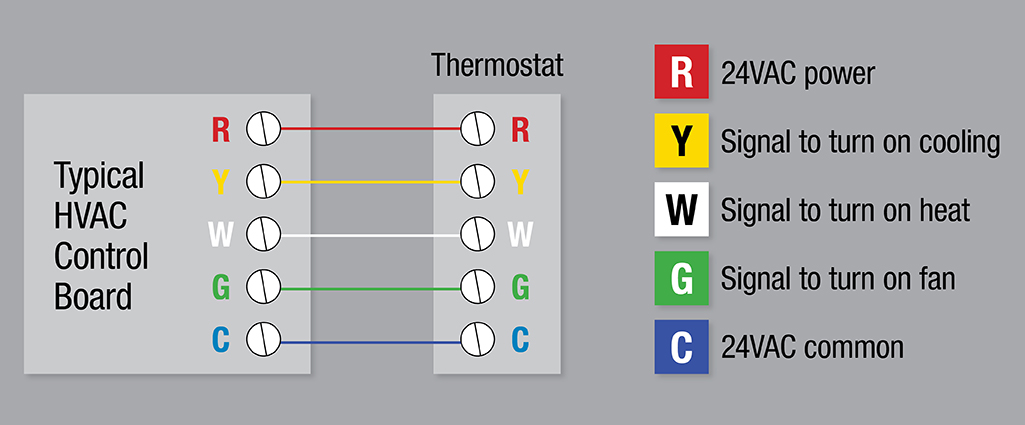
One very important question about the thermostat:
What symptoms a bad thermostat has?
There are numerous typical indications of a malfunctioning thermostat that will notify you that servicing is required, such as:
- Extremely high-temperature gauge readings and engine overheating
- The temperature fluctuates wildly.
- Coolant leaks around the thermostat housing or under the car.
The difference between thermostats and thermistors
Before mentioning the difference between thermistors and thermostats, let’s take a short look at the similarities. A thermostat and a thermistor are two devices that employ metal and its temperature reactions to read and report temperature changes. Metals of many kinds, particularly copper, tungsten, and aluminum, change their characteristics when they heat up or cool down. The variations may be used to determine how temperature changes. As the metals’ characteristics vary, such as their electrical conductivity, the outcome provides a good indication of how temperature varies. Both techniques of measurement make use of metals and their temperature-related characteristics, albeit in different ways.
But let’s go to the main topic of the article: the difference between thermistors and thermostats, and let’s begin with thermistors:
We need to say that the thermistor is still not a ubiquitous temperature monitoring device. It can only be utilized within a narrow temperature range. A thermistor may only be utilized up to 130 degrees Celsius.
A thermostat, on the other hand, is a cruder device than a thermistor. Because conductivity is determined by the mobility of electrons in a metal, even minute temperature variations may be detected by a thermistor. As the temperature fluctuates, a thermostat only allows metals to rise above or push against a contact. A thermistor is more sophisticated since it can read changes in conductivity and hence represent minute temperature changes as conductivity changes.
Another difference between a thermistor and a thermostat is that a thermistor works on the same concept as a thermostat, but differently: A metallic oxide compound, such as cobalt or manganese, is used in thermistors. The conductivity of the metallic oxide fluctuates with temperature, according to the principle. Depending on the metallic oxide compound employed, conductivity typically rises with temperature; the quantity of electricity passing through the compound fluctuates with temperature. As a result, the gadget is calibrated to read variations in conductivity as a reflection of temperature changes.
What Is the Purpose of Thermistors in HVAC?
In most modern air conditioning systems, thermistors are used as temperature sensors to measure the temperature. After detecting the room temperature, the thermostat sends an indoor temperature measurement signal to the control of the air conditioning system, which then adjusts the cabin’s temperature automatically as a result.
Do Thermostats Use Thermistors?
Thermostats typically measure temperature using a sensor like the Thermistor. Thermistors are temperature-sensitive resistors whose resistance varies with changes in temperature.
Download Thermistor vs Thermostat PDF
Additionally, you could download this article as a PDF file to your hard drive so that you will be able to reference this content at any time. The article can easily be downloaded by clicking on the following link.
Final words
In today’s article, we provided an explanation of thermistors and thermostats, and where they are usually used. We also mentioned the difference between thermistors and thermostats. And we tried our level best to make the topic simple for you. If you have any queries, ask in the comments. But never forget to first register in Linquip. Thanks for reading.
Buy Equipment or Ask for a Service
By using Linquip RFQ Service, you can expect to receive quotations from various suppliers across multiple industries and regions.
Click Here to Request a Quotation From Suppliers and Service Providers
Read More on Linquip
- What is the Core Difference between Thermistor and RTD?
- Thermistor Resistance: How does it Calculate?
- Thermistor vs Thermocouple: Complete Comparison & Practical Selection Guide
- Types of Thermistors; A Fundamental Comparison Between Them
- What is a Thermistor and How Does it Work?
- A Good Look at Types of Thermostats
- What is PTC Thermistor? (Applications & Advantages)
- What is NTC Thermistor? (Types, Applications & Advantages)

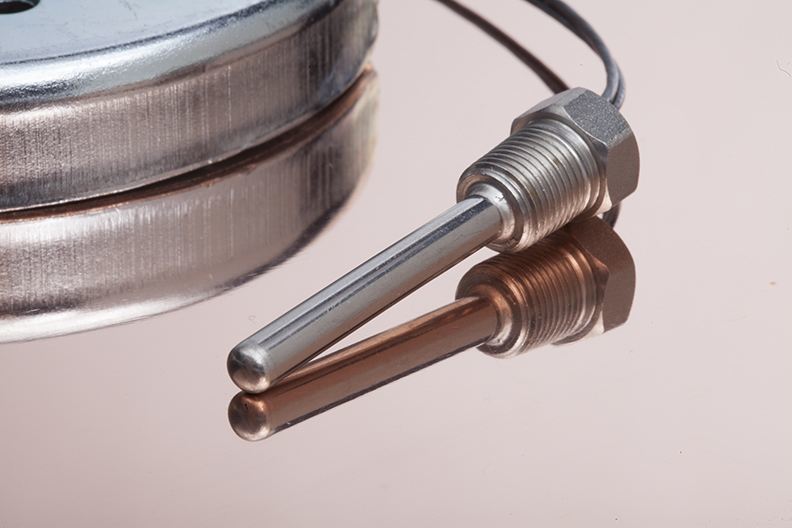
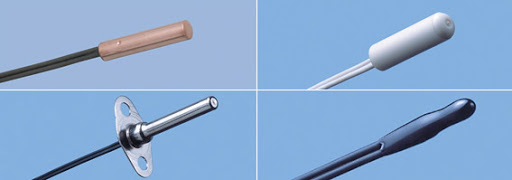
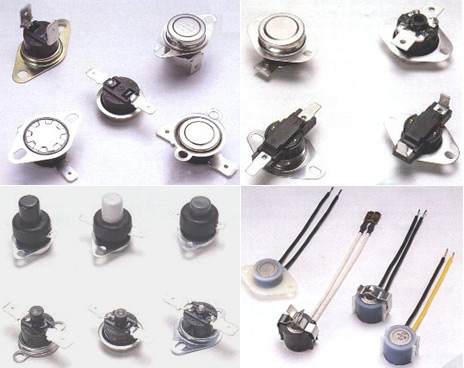


What a wonderful thing you’ve done by telling us about the experience you had! In addition, you may search for the specific piece of industrial equipment you need among the thousands in our comprehensive industrial directories.